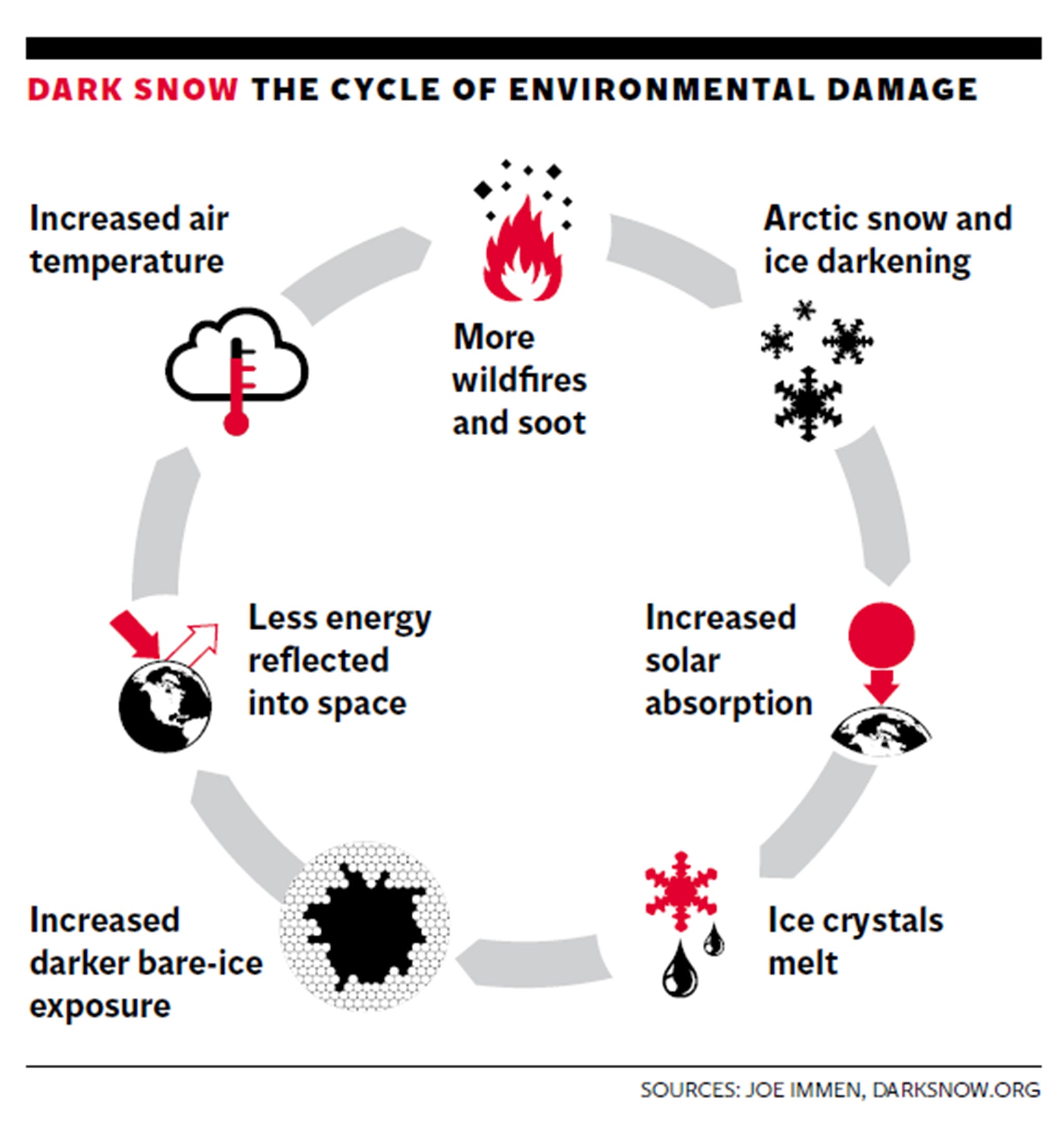Greenland’s dark snow may start global warming ‘feedback loop’
Leading expert on Greenland’s ice sheet says he was ‘stunned’ by recent changes

Your support helps us to tell the story
From reproductive rights to climate change to Big Tech, The Independent is on the ground when the story is developing. Whether it's investigating the financials of Elon Musk's pro-Trump PAC or producing our latest documentary, 'The A Word', which shines a light on the American women fighting for reproductive rights, we know how important it is to parse out the facts from the messaging.
At such a critical moment in US history, we need reporters on the ground. Your donation allows us to keep sending journalists to speak to both sides of the story.
The Independent is trusted by Americans across the entire political spectrum. And unlike many other quality news outlets, we choose not to lock Americans out of our reporting and analysis with paywalls. We believe quality journalism should be available to everyone, paid for by those who can afford it.
Your support makes all the difference.Anyone who has ever slipped over on black ice in the dead of winter will attest to how dangerous it is. But a darkening of the Greenland ice sheet could impact upon the entire world, as the hastening trend reduces the Arctic’s ability to reflect sunlight and increases global warming.
The world’s leading expert on the ice that covers the huge expanse of Greenland has told The Independent that he was “stunned” to see how much darker it has become in the past year – warning it could start a hugely damaging “cascading feedback loop” of the area becoming blacker as less and less light is reflected.
Dr Jason Box, a glaciology professor, has just finished his 23rd expedition to the Danish-owned island since 1994, a series of trips that included spending a year camped on the country’s inland ice. And this time, said Dr Box, he had never seen anything like it.
“Where I took the photos I was stunned by how large an area had such a dark appearance,” said Dr Box, who works for the Geological Survey of Greenland. “This rocket ride has just gotten off the launchpad. I expect the snow and ice to continue darkening – every indication is that the Arctic climate will continue warming and the number of wildfires will keep increasing.”

Unlike the black ice found on Britain’s streets, which is clear and takes on the colour of dark surfaces underneath it, Greenland’s ice and snow really is becoming darker. Dr Fox, who co-founded the Dark Snow Project to measure the impact of the blackening ice on its ability to reflect sunlight, has calculated that the ice sheet is 5.6 per cent darker this year than last.
This pushed its “reflectivity” – the proportion of sunlight bounced back into space – in the upper reaches that make up the bulk of Greenland’s ice sheet to an all-time low last month.
The rapid darkening of the snow is probably due to a combination of increasingly infrequent summer snowstorms, rises in wind-blown dust and the settling of soot from the record number of Arctic wildfires seen this year, Dr Box says. It could also be the start of a cascading feedback loop tied to global warming.
The surface gets darker as the snow melts because the liquid water content rises and the snow grains increase in size. This darkening further warms the ground – and in turn, the atmosphere – and causes more melting. And so the pattern escalates.
The darkening we have seen in the Greenland ice sheet over the past 12 months means it will absorb huge quantities of additional energy this year – enough to satisfy the annual US electricity consumption twice over, Dr Box says.
Furthermore, melting ice is more habitable for micro-organisms, adding dark biomass to the surface, while the decline of snow cover across the Arctic exposes dirt, which can be transported by the wind into other snowy areas.
Dr Box has published more than 50 peer-reviewed papers on the interactions between Greenland’s cryosphere – its areas of ice and snow – and the climate. However, he felt the findings in his latest research were so alarming that he decided not to wait for the lengthy peer-review process to conclude and instead opted to publish first in Slate magazine. He is planning to submit his findings to a formal scientific journal later this year.
As the Arctic warms, forests are burning at a rate that is unprecedented in the last 10,000 years, separate studies show. This year, much of the smoke and soot produced by these wildfires drifted over to Greenland, Dr Box said.
More than 3.3 million hectares burned in Canada’s Northwest Territories this year, nearly nine times the long-term average – resulting in a charred area bigger than the states of Connecticut and Massachusetts combined.
Join our commenting forum
Join thought-provoking conversations, follow other Independent readers and see their replies
Comments